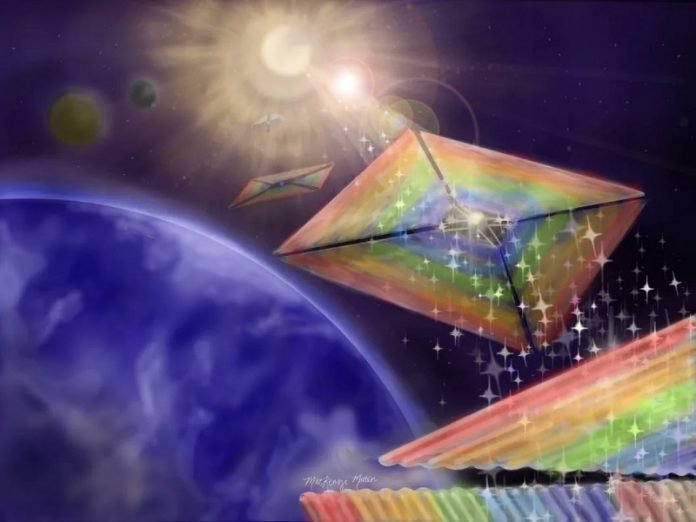
Solar sailing technology has been a dream of many for decades.
The simple elegance of sailing on the light waves of the sun does have a dreamy aspect to it that has captured the imagination of engineers as well as writers.
However, the practicalities of the amount of energy received compared to that needed to move useful payloads have brought those dreams back to reality.
Now, a team led by Amber Dubill of John Hopkins University Applied Physics Laboratory and supported by the NASA Innovative Advanced Concepts (NIAC) program is developing new solar sail architecture that might have already found its killer app – heliophysics.
The technique they are using is known as diffractive light sailing.
It has significant advantages over existing solar sail technology, including the ability to turn.
That is a big problem for most solar sails, which lose effectiveness if they are not directly facing the sun.
Diffraction causes light to spread out when it passes through an opening. Utilizing this property in a solar sail material would allow a craft to turn away from the sun while still getting the pressure of light pushing it in whatever direction it turned.
To create such diffractive pressure, the team created a material with very small gratings embedded in it to diffract the light on a surface that could still benefit from the force created when that light is absorbed.
This would allow any spacecraft using the sail as a propulsion system to turn slightly away from the sun and still benefit from a forceful push from the light’s photons.
To prove this technology, the NIAC is supporting it with a Phase III grant after successfully completing Phase I and Phase II over the past few years.
Phase III comes with $2 million in funding for two years to continue the development of the material used on the solar sail, culminating in ground tests that could presage a move to use in deep space.
Deep space is the most likely place for an application such as these diffractive sails. In particular, the researchers think they will be instrumental in heliophysics.
Traditional propulsion technologies don’t work well around the sun’s poles, given the magnetic interference in that space.
Traditional solar sails wouldn’t work well either, as the incident light falling on them in these locations would either push them farther away from the sun or not push them at all.
With a diffractive solar sail, a spacecraft could still orient itself in the right direction while also using the force from light to move effectively.
This would allow a craft equipped with one to observe the sun from an angle never before seen. But there’s still a long way to go before any craft is outfitted with one.
The funding path past Phase III of NIAC is murky at best for now, and there will still be more development work left to be done after two more years of development.
But, with luck, a new type of solar sail might be attached to the next generation of heliophysics lab. And it might eventually be used on many other programs too.
Written by Andy Tomaswick.
Source: Universe Today.



